Fashion & Vanity
Max Scheler and Craft Fashion
Max Scheler is, without question, one of the most significant philosophers of the twentieth century. With Husserl and Heidegger, he is a founding father of phenomenology, the dominant method of philosophy in Europe today. Some philosophers might be puzzled that a mind as subtle as Scheler’s can be put to work in business ethics, a discipline often thought boring by philosophers or tainted by the grubbiness of money. But what are the questions of business ethics? How to build meaning and personality into the workday? How to integrate the demands of family and work? How to build community and respect the land? Scheler offers the idea of the estate as an answer to these foundational questions about humans in space and time. A number of significant fashion companies are examples of estates and, against the popular belief in the vacuity and meanness of fashion, stand as models for ethically ordered businesses.
Scheler is rare in the history of ideas in being one of the very few thinkers who articulated a comprehensive moral theory, value ethics. He designed The Nature of Sympathy as a criticism of the Scottish theory of sympathy, which he thought warped by the Whig defence of commercial civilisation. Scheler was not against luxury as such but he did think vanity destructive of true morals, unless controlled by a business plan of very particular character.[1]
1
The First World War had a dramatic impact on fashion[2] and it also proved galvanizing for Toryism. Though not without their differences, Tories like Tolkien, Schmitt, Evelyn Waugh, and Scheler, all responded to the values they believed provoked the Great War. First out the gate was Scheler with his 1917 address, “Christian Love and the Twentieth Century.” The essay is a further elaboration of his 1913 The Nature of Sympathy that had faulted Smith on three points (at least). The spectator makes us “spiritual vampires,” commercial ethos inverts the value hierarchy, and Smith’s theory puts Cartesian isolationism (see immediately below) at the heart of the moral order. The great Scottish Whig argued that we have sympathy when an observer “changes place in fancy” with another’s situation.
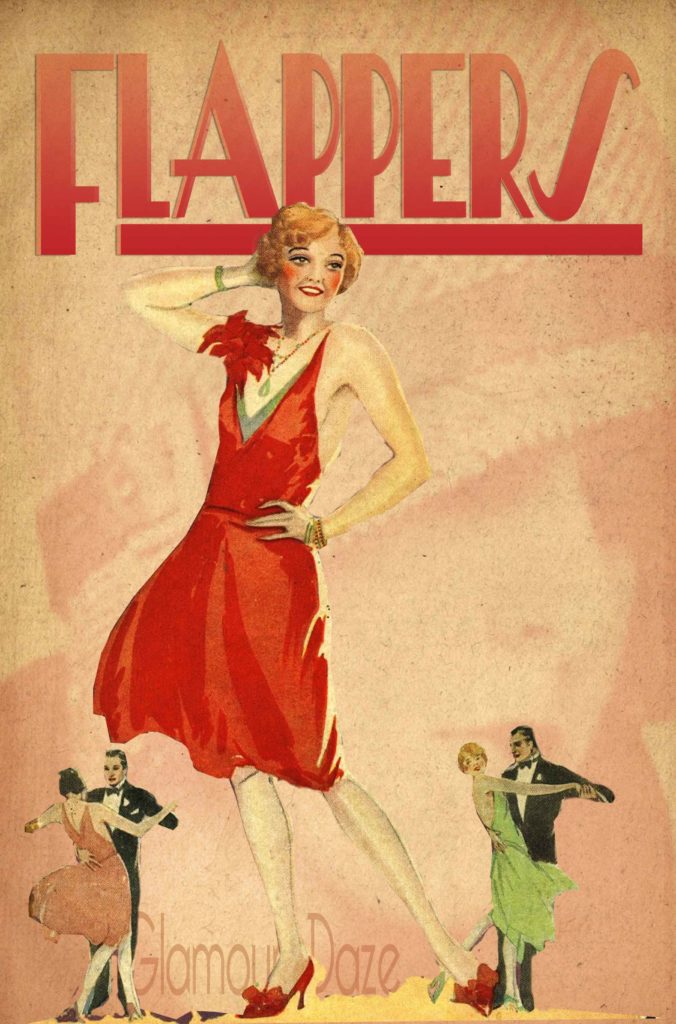
Smith does not think we literally experience with the other person: we do not initially share another’s emotion but rather engage in role play, where we imagine being the other person, assessing how we ourselves would feel in that person’s situation; we then see whether our emotion correlates with the emotion exhibited by the person. If the spectator does not have the same emotion that person is judged immoral. Morality is the unity of emotion.
In Chapter 6, I look in detail at fantasy and role play, but Scheler contrasts markedly with Smith because he thinks these have no essential role in moral judgement: Scheler thinks consciousness is, first and foremost, a community experience, and so rather than imaginative role-play we often have direct experience with persons (and some animals) around us. He thus thinks that Smith (unawares?) relied on Descartes famous theory of experience, which assumes from the get-go one ego isolated from every other. To use Benedict’s terms again, moral poverty has been built into the very framework of moral order. In “Christian Love in the Twentieth Century,” Scheler turns to the institution, the estate, which will correct this mangled account of human connectivity.
2
Scheler identifies seven attributes of what he calls the “hostile modern spirit,” a spirit, for which the Whigs are largely at fault, hostile to the care of the person. I discuss this list at length in the Introduction to my Tolkien book so here I will only mention the attributes: humanitarianism; doctrinaire individualism or socialism; the absolute state; exclusive cultural nationalism; competition and rivalry; communities built exclusively by contract; and finally, “the bourgeois-capitalist economic ethos of unrestricted production and accumulation of capital” (EIM, 366).
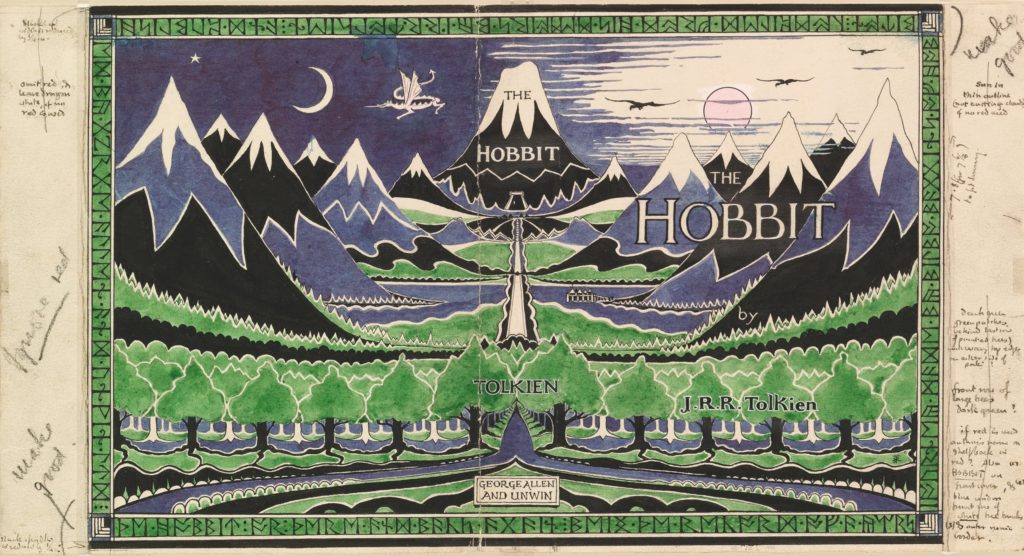
These attributes each displaced other values and ways of human relating. Humanitarianism replaced ideas of personal love, sacrifice, and service, and six other displaced values he identifies are: “the Christian idea of the moral solidarity of autonomous persons;” feudalism; national cultures linked as members of a world-culture; intellectual and spiritual work spanning nations and multiple generations; local, organic groups living in solidarity; moral principles directing economic activity to supply “the needs of the community” (EIM, 366). These are the values of Toryism, which Scheler re-works into the idea of the estate: he thereby offers a model of work and business as an antidote to the Whig spiritual forces that provoked the catastrophe of the First World War.
3
The estate — a place where knowledge is gained, innovation exercised, and a space that is also a web of sympathies — cements a person’s dignity.[3] The estate is a place of work, a property that fosters a status: it provides a role for self-regulating human effort (subsidiarity).
Linked to a community, it is a concern of families in a local environment (solidarity).[4]
Here is how Scheler puts it:
An estate is something stable, a standing or status, something wherein a man is self-sufficient, but which he nevertheless does not freely choose like a profession, since he merely finds himself ‘placed’ there. But to know one’s estate is to be truly at home in the State, at home in the consciousness of firmly defined and assured lawful rights on which no one may trespass (EIM, 399-400).
4
Many will not recognize this vision of work. Though most people do, in fact, work for small companies, a basic image of modern work is of anonymous office blocks or perhaps vast factories in China.[5] Such images convey the idea of a worker having a function only,[6] a mere body able to be slotted into changing conditions of work or replaced rapidly if necessary. By contrast, an estate is a place of work that also forms a person’s identity. To have a sense of being valued, persons need a place to belong; they need an historical identity, a status. Status, in this sense of having a readily understood standing in the community, cuts against Smith and Hume’s idea of mobility: inhabiting a status changes desire itself; it cancels the roving appetite of acquisition – an appetite fully on display in Jay-Z’s pop video, “On to the Next One.”
Where “all estates have disintegrated,” writes Scheler, “everybody must continually compare himself with everyone else, since here it is not the substance of the work which is felt as the positive motive of activity but always the being or having ‘more than my neighbour’ (EIM, 400).
5
In 1917, Scheler predicted that modern work would tend towards the reestablishment of estates (EIM, 401). An extremely interesting example of this, and one gaining a lot of attention, is the business model of Brunello Cucinelli. The Vimeo video, “A Man and His Dream,” tells the story of Cucinelli’s father.
His father left the village and went to the city to work in a factory but there, we are told, he suffered multiple humiliations. In starting his cashmere clothing business, Cucinelli swore to find an alternative business model so that he and his staff might work in dignity. Returning to the village of his wife, mostly abandoned and derelict, Cucinelli began to restore the Italian village of Solemeo, using surrounding lands for the sheep he grooms for his signature cashmere. The video, and multiple news articles, attests to the high quality working conditions. A more recent venture has seen Cucinelli build a “School of Craftmanship” in the village. A school for the mechanical arts, the costs of the school are borne by the company with accepted students given stipends. The crafts taught are: mending and linking, cutting and assembly, tailoring, masonry, and gardening, along with the liberal arts of philosophy and ethics. It is interesting that the last two mechanical arts in the list are explicitly linked to the history of a space.
6
In the video, Cucinelli speaks of his philosophical inspirations: amongst others, Kant, Rousseau, and St. Benedict. From Kant, he learnt both the importance of physical and moral beauty, from Rousseau, the dignity of village life, and from St. Benedict, the role of the abbot father who manages others but always with an eye to the confirmation of their dignity. This is a Tory business, with no debt and more than 300 million dollars in turn over, and Cucinelli comes across as a man brimming with “moral-religious insight” (EIM, 396), as Scheler puts it.
7
Cucinelli’s model is being copied. Prada has recently launched a dedicated website to showcase their three principles of corporate social responsibility (CSR): know-how, place, and culture.[7]
But others have literally had to be resurrected: Georges Desrues, experts in clothing with feathers, had 5 staff round the time Chanel bought them, down from 400 workers at one point. Prada is also bringing more production in-house. After outsourcing to China they learnt that even at high quality factories there simply was not sufficient attention to care of the finest details e.g. how to correctly sew on buttons. They have also taken a leaf out of Cucinelli’s book in sponsoring reflection on the liberal arts, and not only design, but philosophy and large, strategic ideas. Though more urban than Brunello Cucinelli, Prada have re-thought their connection to the land, not only environmentally, but as a partner in the creative process of their designers and artisans.
8
Cucinelli clarifies that fashion can be Tory in inspiration; that luxury, and even vanity, are not directly opposed to values that affirm persons.[10] Indeed, his business plan seems to be very much what Pope Francis seeks (LS, para. 112). I may be wrong about this, but Laudato Si’ is, I believe, the first encyclical to explicitly state that it is a moral obligation of government to support small business (LS, para. 129). The point has always been implicit in the norm of subsidiarity and Francis re-affirms the long-standing papal interest in Distributivism (LS, para. 94), which aims at a proliferation of cottage industry and analogues.[11] He affirms the need for “differentiated production:”
9
For example, there is a great variety of small-scale food production systems which feed the greater part of the world’s peoples, using a modest amount of land and producing less waste, be it in small agricultural parcels, in orchards and gardens, hunting and wild harvesting or local fishing. Economies of scale, especially in the agricultural sector, end up forcing smallholders to sell their land or to abandon their traditional crops (LS, 129).
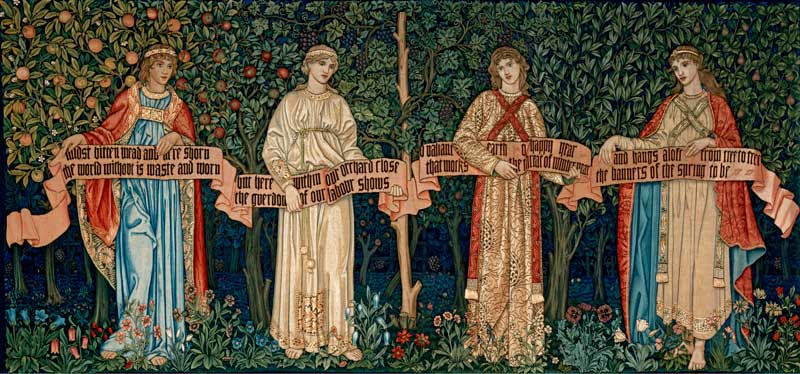
10
Like Cucinelli (and the anarchist Agamben), Francis is also impressed by the monastery as a business model (LS, para. 126); craft (LS, para. 98, 124); by the role of place in our formation (LS, para. 12, 70, 84, 115). And no pope in the CST tradition has been such an advocate of the beautiful, despite himself being very modest.
11
I want to argue that as an example of Scheler’s estate, Brunello Cucinelli clothing is an example of the fashion industry in the vanguard of business ethics. It is not alone. A Cucinelli jumper is $2000 and one might dismiss the village of Solemeo as the indulgence of a very rich man. This splenetic response ignores both the fact that he is a self-made man and has made his money with this business model. It also ignores other estates that have grown in recent years. Patagonia makes environmentally conscious outdoor wear. Originally clothing for mountaineers, the clothes are now High Street Fashion, with solidly middle class people of all ages wearing the brand. Patagonia is a family firm, belonging to its founder, Yvon Chouinard.[12] To help with its environmental stewardship, Patagonia is seeking to reduce the sale of new clothing by repairing old items and fostering a secondhand market to encourage owners to resell and buy used Patagonia.[13]
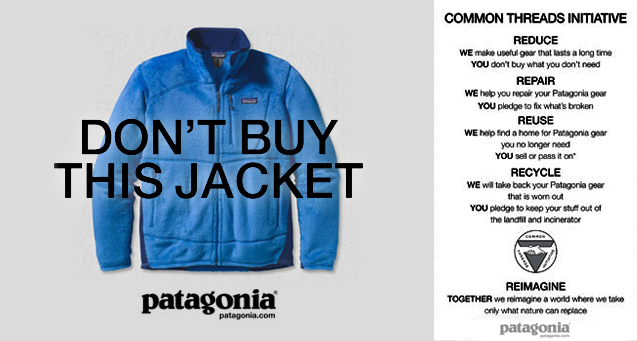
12
The primary task of the estate is to clip the wings of vanity as an animating principle of production and social life: it aims to halt “the boundless craze to have more and be more,” “this meanest destroyer of self-respect” (EIM, 397). Patagonia wants to establish a series of boundaries: to restrict new production and industrial impact on the environment; to reconfirm the identity of its customers as Patagonia people, who like the values of thrift and craft implied by the plan; and to use history, literally, the history etched into the mended and worn clothing, to channel vanity into a heritage that redraws the company’s borders and releases space back to nature.
13

The first thing one thinks of when hearing the idea of the estate is likely a country estate, a manor with surrounding lands, cultivated for food or sport. Scheler’s idea certainly does not exclude such estates[14] but, as the Patagonia example shows, it is a flexible model for business. Estates do affirm varied values (EIM, 396).[15] Interestingly, both Cucinelli and Patagonia affirm the values of the traditional mechanical arts. Design houses always link to the liberal arts, but Cucinelli’s school affirms mending and tailoring, and in a more limited way, so does Patagonia. Its new production might extrude from computers and machines but mending clothes, given that they will be returned to Patagonia with all manner of tears and pulls, requires handcraft. Though I have not read this, I assume Patagonia has recently been hiring seamstresses: in 2015 the company reported doing “40,000 individual repairs.”[16] Cucinelli is a more complete example of the estate than Patagonia but it is, in turn, more complete than other fashion houses that support the mechanical arts. Belgian fashion house Dries Van Noten seems to be a case in point. The brand prides itself that it employs 3000 people in India to do hand embroidery, or that it supports mills in England that retain specialist weaving knowledge. Nonetheless, I am not sure there is a conscious interest in boundaries: the brand does not, like Patagonia, seem to pointedly articulate itself in time (heritage) and space (place).[17] [18]
14
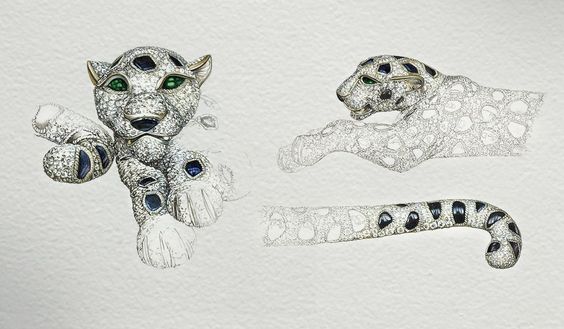
The link between time and space is potent. Contrast the fate of Cartier and Tiffany & Co. in recent years. Cartier is an example of an estate. Its signature piece, the panther bracelet, combines extreme exclusivity with history, place, and craft. Despite changes in ownership, Cartier has remained strongly identified with Paris, craft, and design objects like its signature tank watch and panther bracelet. Originally designed in the late forties by Jeanne Toussiant for the Duchess of Windsor, Cartier makes about ten panther bracelets a year.[19] The process is involved: head jewellers meet to review and allocate new gem purchases; the archives are consulted as original sketches are drawn; three dimensional mock ups are made; and jewellers then build the bracelet and spend some 500 hours setting the stones.[20] I suspect the master jewellers who make the panthers have been with Cartier most of their lives. The crafting of the panther matches one of the hierarchies of value that Scheler identifies. Amongst its other attributes, an estate is first characterized by love of the work, a regard for the quality of the product, then, the continuity of the business, and finally, the profits of the company.[21] In most of these regards, Tiffany & Co. has struggled.
15
Tiffany & Co. has heritage aplenty but it foolishly diluted its identity by branching out into a silver line of items.[22] The strategy seemed logical enough: make much cheaper items with large mark ups trading on Tiffany allure; profits would be high and the items would function as an on-ramp; teenagers could have Tiffany and when older and wealthier a bond with the brand would already be in place triggering purchases of more rarefied pieces. You can pretty much guess what happened next: silver sales overwhelmed the brand and high-end sales fell off markedly. It had to happen: in some shops at Christmas, staff, overwhelmed by teenage silver sales, handed beepers to older customers and asked them to wait; unsurprisingly, these customers bolted, went across the street, and dropped huge money at Van Cleef. To try to claw back its older, wealthier clients, Tiffany has been forced to redesign its shops, and make customized appeals to clients — e.g. inviting them to tour the actual work rooms where their master jewellers work — to draw them back into the fold.
16
Tiffany’s own-goal was repeated by Gucci, which also diluted its estate.[23] In both cases, the companies have had to try to reclaim their heritage. Other labels have done this adroitly: uninspiring through the ’90’s Jaguar recently launched Jaguar Heritage to resuscitate its cars of yesteryear, and is now consciously tying new designs to the company’s storied racing history and the high watermark designs of the ’60’s. Jaguar is using its history and its Britishness (though now Indian owned) in a way Scheler would admire. More cunning still has been the revitalization of Gucci. A brand seriously compromised by the pursuit of growth and profit, its new designs rely both on craft and eccentricity. “It’s very rare when a brand has a resurrection like that,” observes one commentator. The move to eccentricity is the insight of the Italian, Marco Bizzarri. A well-known pop video by Krayshawn pointedly lists Gucci as a brand that makes one “basic,” conformist and uninteresting.[24] Alert to the problem of Scheler’s spiritual vampire, Bizzarri has re-affirmed Gucci’s craft heritage and staked out a claim to be quirky and off-beat.

17
Tiffany’s troubles have been compounded by the problem of blood diamonds. Kanye West’s beautiful pop video “Diamonds of Sierra Leone”[25] helped publicize the issue of conflict diamonds: as did the war crimes trial of Charles Taylor, which heard evidence about the super model Naomi Campbell receiving blood diamonds from the Liberian gangster dictator. To solve this problem, and other supply issues, Tiffany & Co. turned to the model of the estate. Members of the diamond industry agreed in 2003 to abide by the Kimberly Accord: the use of tamper-resistant boxes to prevent illegal conflict diamonds entering into the supply chain. For reasons I discuss elsewhere, this is a good but by no means sure step given the cunning of organized crime (KA, 15-32).
18
Tiffany has inoculated itself to a degree by an intriguing relationship with Botswana.[26] Botswana agreed to Tiffany building a diamond cutting and polishing factory at the head of one of their mines, and in exchange for gaining access to morally clean diamonds, Tiffany would train local youth in diamond manufacture. The curiosity here is that Tiffany is retail, not a supply specialist. Not only has the company had to make a physical commitment to Botswana, with bringing production in-house Tiffany has needed itself to be schooled by experts on how to cut and polish diamonds. 50% of its cut diamonds are now from in-house. The Botswana venture is a small part of that, nonetheless from Scheler’s perspective this is the emergence of an estate. Again, not as complete as some other business models (Tiffany’s factories are in a number of countries) but certainly Scheler would commend this linking of history (a portion of the company’s future) and space (Botswana).
Scheler offers a business model that can embed vanity inside stable communities. Vanity is not intrinsically agonistic to Tory ideals.

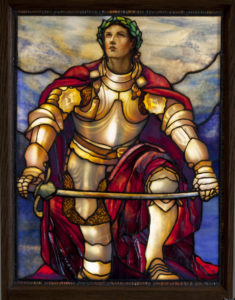
19
FOOTNOTES
[1] For Scheler’s appreciation, and criticism, of the Scottish school, please see each of my introductions to Max Scheler, The Nature of Sympathy (London: Transaction, 2007) and On the Eternal in Man (London: Transaction, 2009).
[2] See the fashion exhibit 14 18 NOW hosted at Manchester Art Gallery.
[3] For this point, see the Vimeo video of the Lewiston workshop of shoemaker, Quoddy.
https://vimeo.com/27649762
[4] Rome Gets An Incredible New Public Sculpture
[5] “How the U.S. Lost Out on iPhone Work,” NYT (January 21, 2012); “Secret Video of Exhausted Workforce at Chinese Factory Making Apple Products,” BBC news (December 18, 2014).
[6] In a fascinating reflection on the difference between role and function, Chantal Delsol argues that not everyone is equal to the same role and that these inequalities are essential to the very idea of what it is to be a person. In the idea of a role, comments Delsol, there is the original notion of person, the playing of a part in theatre with its irreducible particularity. As a rather critical friend of the Enlightenment, Delsol argues that there is real value in the idea of the function and its creation of individuals as opposed to persons: The idea did liberate whole classes, especially women, from confined, invariant roles in the social world. As a Catholic theorist and mother of five, however, she is equally eloquent that the abolition of roles is not only absurd (when your mother needs to go to the hospital can you really just call a cab?) but pernicious to ideas of personal uniqueness. Chantal Delsol, Icarus Fallen: The Search for Meaning in an Uncertain World (Wilmington, DE: ISI Books, 2003), chapter 13.
[7] http://csr.pradagroup.com/en/home/
[8] “Chanel, the Saviour of Savoir-Faire,” BOF: Robin Mellery-Pratt, April 19, 2015.
[10] Hermès, an old, family-run company, argues that craft, and the talents of its craft folk, is the core of luxury (“Hermès Doesn’t Make It Easy to Buy Its Clothes. That’s Why It Sells so Well”).
[11] For an interesting example, see “An Apple Tree Grows in Suburbia” (Stephanie Simon).
[12] For a profile of Chouinard, please see “Patagonia’s Founder Is America’s Most Unlikely Business Guru” (Seth Stevenson).
[13] “Patagonia Asks Its Customers to Buy Less” (FastCompany.Com: Ben Schiller [Oct. 25, 2011]).
[14] Nor are such estates losing their appeal with people as various as Madonna and Dyson supporting them.
[15] For an effort to link start-up tech companies with the estate, see the article about H-Farm (“Start-ups that bet on the farm,” FT: Philip Delves Broughton, February 2, 2012).
[16] “Don’t Buy This Jacket” (Katie Hope, BBC News, December 17, 2015).
[17] “Dries Van Noten: I Want to Show Reality” The Talks, May 13, 2015.
[18] Though some distance from Cucinelli, positives are found at Mulberry, too: “Mulberry’s Industrial Revolution” (Daily Telegraph: Luke Leitch).
[19] Sotheby’s recently auctioned for nearly five million pounds the bracelet that had belonged to the Duchess of Windsor
[20] “The Sublime Cats of Cartier” (WSJ Magazine, September 2011).
[21] A fine example of these priorities is the artisanal hat company, Horisaki: “An Artisanal Hat From a Family Farm in Sweden” (Brenda Cronin).
[22] “To Refurbish Its Image, Tiffany Risks Profits” (Ellen Byron).
[23] “Gucci Finds Its Brand of Luxury a Tough Sell” (Manuela Mesco).
[25] Kanye West- Diamonds from Sierra
[26] “Diamond Industry Makeover Sends Fifth Avenue to Africa” (Venessa O’Connell).